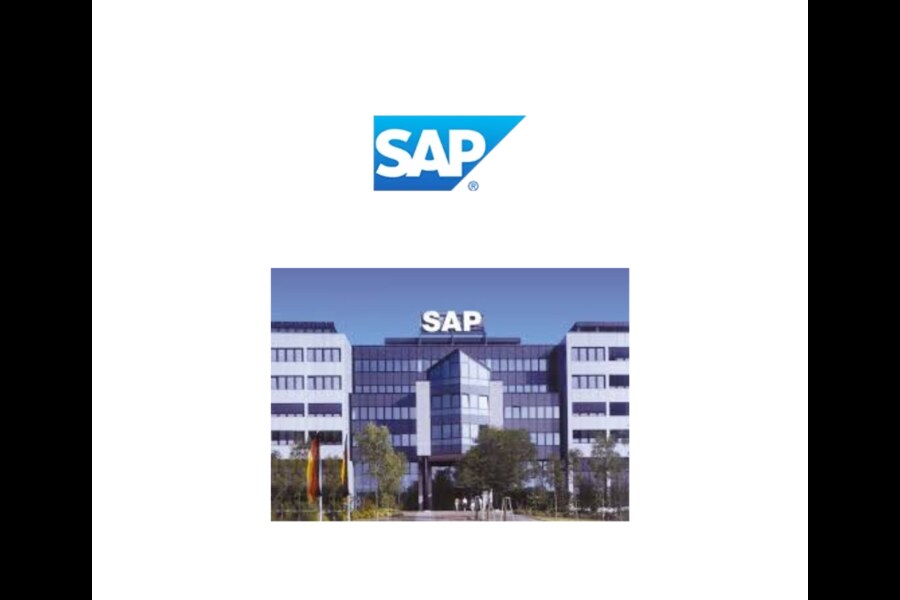SAP SE, headquartered in Walldorf, Germany, is a global leader in enterprise application software. Founded in 1972, SAP serves over 400,000 customers across more than 180 countries. As of 2023, the company reported revenues of €31.26 billion and employed approximately 108,000 people worldwide. SAP’s software solutions are integral to business operations, encompassing areas such as enterprise resource planning (ERP), customer relationship management (CRM), and supply chain management.
SAP’s Mergers and Acquisitions: A Historical Overview
Over the years, SAP has strategically acquired numerous companies to enhance its product offerings and enter new markets. Below is a selection of notable acquisitions:
- Concur Technologies (2014) – $8.3 billion
- Qualtrics (2018) – $8.0 billion
- CallidusCloud (2018) – $2.4 billion
- Signavio (2021) – Approximately $1 billion
- WalkMe (2024) – $1.5 billion
- Fieldglass (2014) – Undisclosed
- SuccessFactors (2011) – $3.4 billion
- Sybase (2010) – $5.8 billion
- BusinessObjects (2007) – $6.8 billion
- Ariba (2012) – $4.3 billion
- Hybris (2013) – Undisclosed
- Gigya (2017) – $350 million
- LeanIX (2023) – Undisclosed
- Emarsys (2020) – Undisclosed
- Taulia (2022) – Undisclosed
These acquisitions have allowed SAP to expand its capabilities in areas such as cloud computing, analytics, and customer experience management.
Divestitures: Strategic Realignments
SAP has also engaged in divestitures to streamline its operations and focus on core competencies:
- SAP Digital Interconnect: Sold to Sinch in 2020 for $254 million.
- SAP Litmos: Divested to Francisco Partners in 2022.
- Qualtrics: After acquiring Qualtrics in 2018, SAP took it public in 2021.
- Financial Services Industry Unit: In 2021, SAP partnered with Dediq GmbH to form a joint venture focused on financial services, transferring intellectual property and staff to the new entity.
Recent Activities: Successes and Challenges
In 2024, SAP announced the acquisition of WalkMe, a digital adoption platform, for $1.5 billion. This move aims to enhance SAP’s business AI offerings and support end-users in adopting new IT solutions.
Additionally, in 2023, SAP acquired LeanIX, a company specializing in enterprise architecture management. This acquisition complements SAP’s existing offerings and supports customers in navigating complex IT landscapes.
However, SAP has faced challenges, including a significant restructuring plan announced in early 2024, which involves cutting 8,000 jobs to focus on artificial intelligence and efficiency. The company plans to reinvest in growth areas and expects to maintain its headcount by the end of 2024.
Strategic Decisions and Reasoning
SAP’s M&A strategy reflects its commitment to innovation and digital transformation. By acquiring companies like WalkMe and LeanIX, SAP aims to enhance its AI capabilities and provide comprehensive solutions for enterprise architecture management.
The divestitures and restructuring efforts indicate SAP’s focus on core business areas and its adaptability in a rapidly changing technological landscape. These strategic decisions are designed to position SAP as a leader in enterprise software and business AI.
Final Thoughts: SAP’s M&A Outlook and Strategic Trajectory
SAP’s mergers, acquisitions, and divestitures paint a clear picture of a company that understands the importance of agility in a rapidly evolving digital world. From foundational ERP systems to modern cloud-based solutions and AI integration, SAP has consistently aligned its growth strategy with emerging technologies and customer needs.
The acquisitions of Qualtrics, Ariba, and BusinessObjects were milestones that significantly broadened SAP’s capabilities in experience management, procurement, and business intelligence, respectively. Meanwhile, more recent purchases like WalkMe and LeanIX underscore SAP’s shift toward AI-driven user enablement and enterprise architecture management—areas critical to the success of digital transformations across industries.
At the same time, SAP’s divestitures, including the public spinoff of Qualtrics and the sale of non-core business units like Litmos and SAP Digital Interconnect, demonstrate the company’s focus on simplifying its portfolio and directing resources to high-impact innovations. These decisions are not just financial maneuvers; they are strategic recalibrations intended to deepen SAP’s leadership in cloud, AI, and enterprise technology.
Evaluating Successes and Lessons Learned
- Successes: SAP’s ability to integrate acquisitions like Ariba and SuccessFactors has been widely acknowledged as pivotal in expanding its SaaS offerings. The Qualtrics IPO, despite SAP’s eventual exit, was a financial success and proved SAP’s strength in identifying valuable tech assets early.
- Challenges: Not all integrations have been smooth. Internal complexity and overlapping product portfolios sometimes created inefficiencies, particularly when aligning acquired platforms with SAP’s existing suite. Additionally, the full value of some acquisitions—like Sybase—has taken time to realize, and critics have occasionally questioned the pace of innovation post-acquisition.
- Recent Pivot to AI and Digital Adoption: The 2024 acquisition of WalkMe is poised to be a strong move, aligning with SAP’s broader investment in generative AI and automation. While job cuts related to the restructuring have raised eyebrows, SAP’s strategic bet is on reinvesting in future-ready technologies, signaling confidence in its long-term roadmap.
Looking Ahead
With a strong global customer base, robust R&D pipeline, and a refocused strategy built around cloud, AI, and user-centric design, SAP is well-positioned for the future. The company’s M&A activity will likely continue to play a critical role in enabling this transformation.
What sets SAP apart is its deliberate approach: each acquisition is part of a long-term vision—not just to add features, but to reshape enterprise software for a new era. By building a coherent ecosystem of solutions and streamlining operational focus, SAP aims to remain not just relevant, but indispensable, in a future where intelligent business processes are the new standard.

